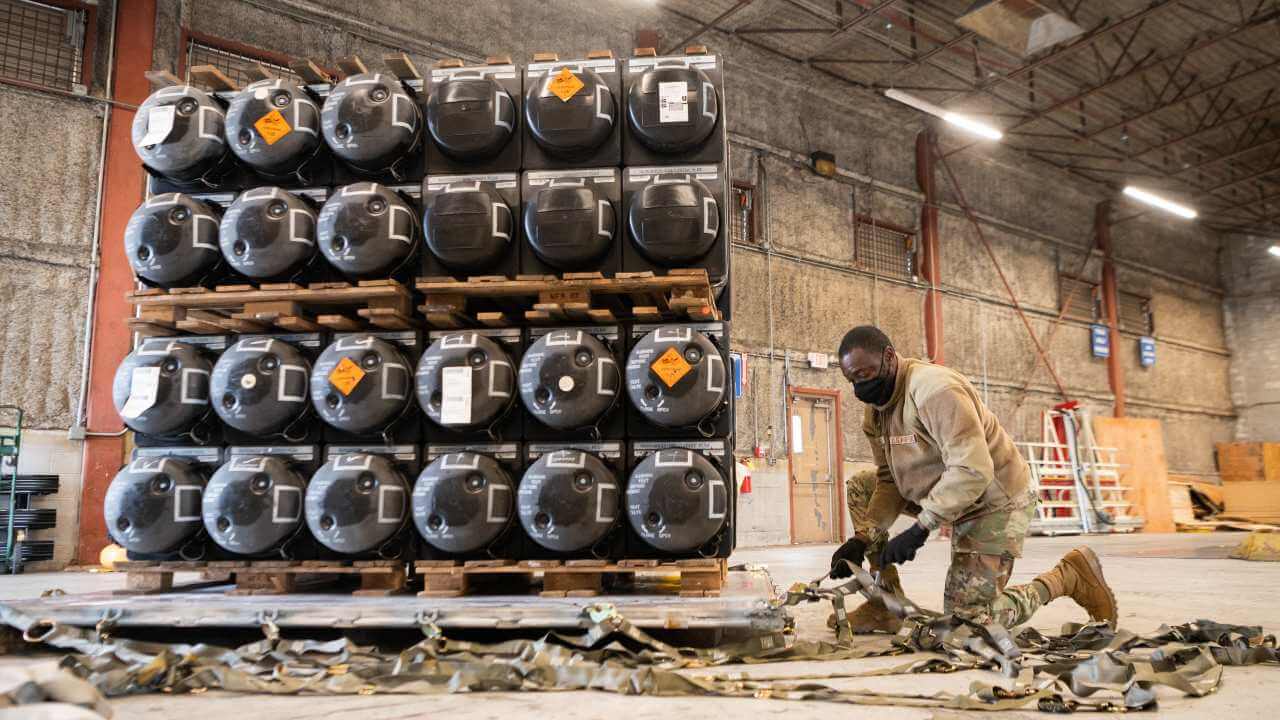Something changed last week. After months in which Russian troops and equipment moved westward toward Ukraine, after its impossible demands to NATO, after fruitless rounds of discussions between diplomats, it seemed the West had finally begun to lose patience.
Now the crisis has entered a new phase as European allies and the US begin to move up through the gears of possible conflict. That had begun with unified statements warning Russia to halt its menacing behavior, then to talk of arms deliveries, followed by the dispatch of weaponry to Ukraine, and now the readying of NATO military assets, including combat aircraft, warships, and troops. Some 8,500 US personnel have been put on alert to move eastward at short notice.
Events have not developed in a straight line (they never do.) and the Western response has not always been as well-choreographed as the US administration would probably like. But if Vladimir Putin thought the Atlantic alliance was weakened and would crack under the pressure of a manufactured but menacing crisis, he will have been disappointed.
Even so, some clear divisions have emerged, even if they aren’t yet enough to crack open the shampanskoye in the Kremlin.
Take Germany’s behavior in recent weeks. Estonia had hoped to send old, Russian-made artillery pieces to Ukraine. Originally Soviet weapons held in East Germany, they were inherited by the Federal Republic and later sold to Finland. After another sale, they ended up in Estonia, which wants to send them to Ukraine. Germany however, retains a right of veto and refused.
This is hardly a stand-alone example of German ambiguity. Online social media flight tracking sites noted in mid-January that Royal Air Force cargo flights carrying anti-tank weapons from the UK to Ukraine were avoiding German airspace. While No. 10 Downing Street denied they had been refused overflight rights, German government sources let it be known that the aircraft had lacked the right paperwork, which might have taken a fortnight to process.
Germany’s ambivalence is long-standing. The political class and many ordinary people argue that because of the country’s past it has a special obligation to seek peaceful outcomes. That informed the policy of Angela Merkel’s relations with Russia, though arguably in more benign times. Germany’s new leaders — only in office for a few weeks — have sometimes sounded half-hearted, leaving them open to accusations that they are bad allies. France and Italy have also seemed unsure how to respond. Fiona Hill, the former National Security Council aide, told the Italian website Decode 39 that US policymakers feel that European allies are disordered: that Emmanuel Macron speaks of European autonomy; Chancellor Olaf Scholz voices caution, while Russia expects no Italian involvement at all.
This sense of poor organization among the big three of the EU may explain developments, as one by one, the more pro-Ukrainian governments of Europe announce decisions. As a result, the resonance of a single, unified announcement has been lost. In fairness — and as French officials loudly proclaim — the country has said it will send forces to Romania if required, a notably more supportive position than Hungary, whose foreign minister has stated that the country doesn’t want another Cold War. The Netherlands, Denmark, and Spain have all indicated they will make forces available, or intend to deploy soon. Prime Minister Boris Johnson said on January 25 that additional UK deployments to the Baltic states and NATO’s south-eastern flank might be needed. The Czech Republic hopes to send 155mm artillery ammunition to Ukraine.
Germany says it will provide Ukraine with medical supplies and points out that it has troops in the Baltic states as part of NATO’s deployment there. Less than a month into office, the new German defense minister, Christine Lambrecht, is facing a thankless task. History, the broad anti-war sentiment of a nation uneasy about an assertive foreign policy (the now-ruling SPD blocked surveillance drones for German troops in Afghanistan) and a sense that Russia is not a threat to its prosperity or its security are just some of the difficulties. Just 16% of Germans see Russia as a major menace to its values, compared with 54% of Americans.
Perhaps to remedy this uncertainty in the European response and to ensure unity, Biden met the leaders of France, Germany, Italy, Poland, and the UK, as well as the EU and NATO, (January 24) and also discussed Secretary of State Antony Blinken’s meeting with the Russian foreign minister last week.
The European divide is symptomatic of the EU divisions that often characterize major foreign policy crises. The EU has complained that it is not consulted, but also wrings its hands at its own inability to cohere on tough issues. Even so, the inability of the EU to be a meaningful or cohesive actor in the face of such blatant aggression is getting old. The Atlantic community needs to come up with something new—something better organized.
Cordelia Buchanan Ponczek is a Clarendon Scholar and doctoral candidate at the University of Oxford, where she is researching public-private investment into extractive industries.
Europe’s Edge is CEPA’s online journal covering critical topics on the foreign policy docket across Europe and North America. All opinions are those of the author and do not necessarily represent the position or views of the institutions they represent or the Center for European Policy Analysis.





